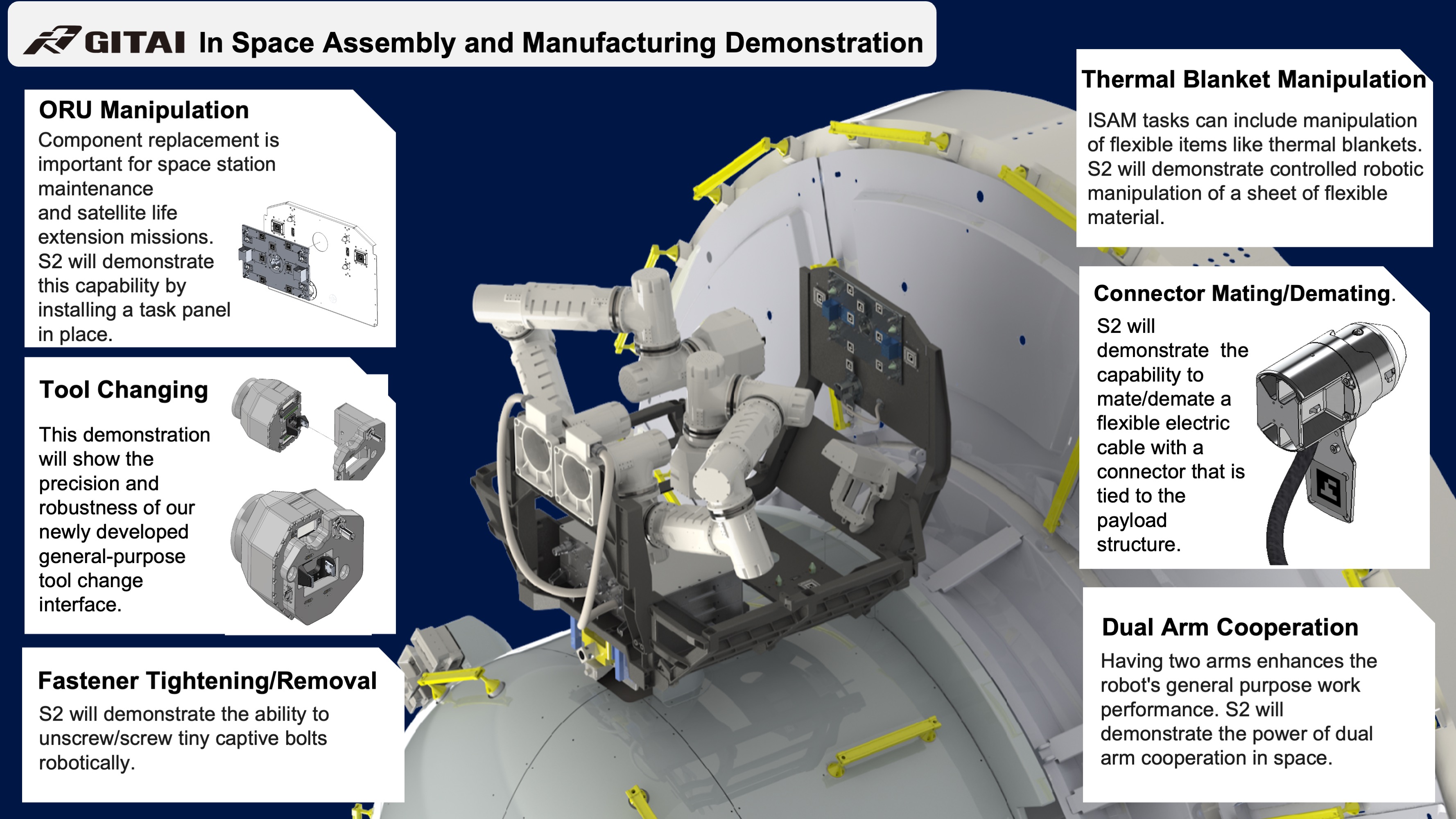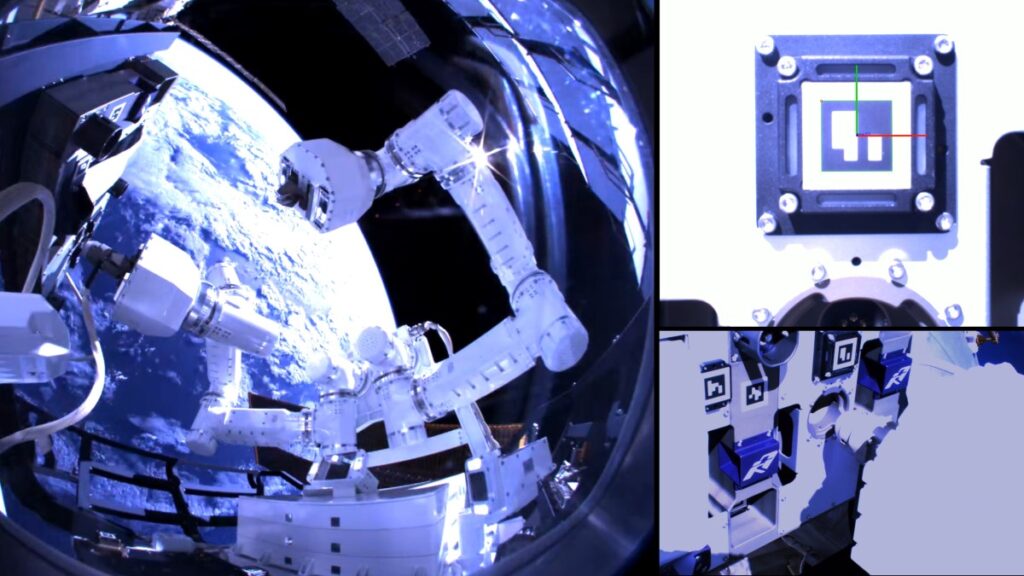Los Angeles-based Gitai said on Tuesday that its autonomous robotic arm had conducted a technology demonstration outside the International Space Station.
Gitai CEO Sho Nakanose told TechCrunch When interviewed last year The company aims to reduce space labor costs by a factor of 100, just as SpaceX and other suppliers have dramatically reduced launch costs. Autonomous robotic systems have a long way to go before they can replace the human workforce, especially here on Earth. But in space, human labor is costly (and dangerous), providing opportunities for robotic alternatives.
The 1.5-meter-long autonomous robotic arm, which the startup calls S2, was launched to the International Space Station aboard a SpaceX Falcon 9 rocket in January. It mounts to the exterior of Nanoracks’ Bishop Airlock and then performs a series of tasks that are critical to building structures that live and work in space. These include installing task panels, tightening and loosening small bolts, handling flexible materials, and attaching and detaching flex cables to connectors.

Image Source: Jitai
In the short term, the company aims to provide on-orbit satellite services to spacecraft in low Earth orbit and geostationary orbit. Gitai is also developing robotic satellites capable of performing tasks relevant to this market, such as rendezvous, docking, inspection and deorbiting, they said in a statement.
The eight-year-old startup plans to begin in-orbit services in 2026. Gitai said Arm’s Technology Readiness Level (TLR), a standard used by NASA to chart technology maturity, is currently at the highest level of 7. Another product of the startup, the “inchworm” arm, is also at TRL 7.
